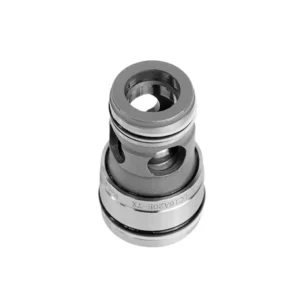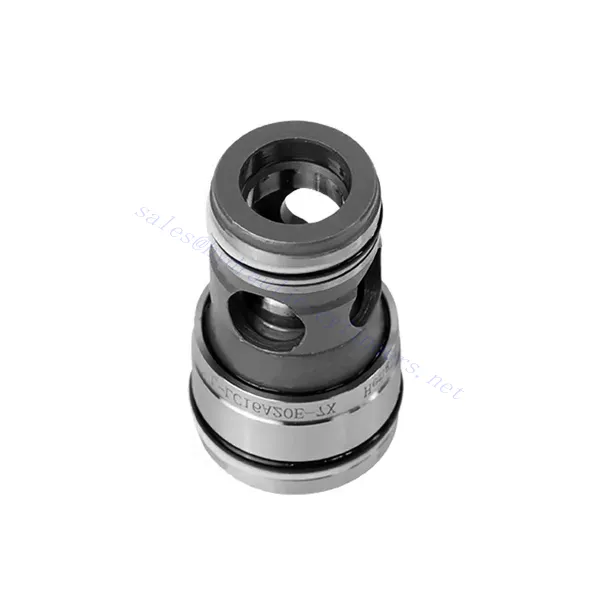L-LC Series Pressure Control Function Hydraulic Valve
Som en av produsentene, leverandørene og eksportørene av mekaniske produkter tilbyr vi hydrauliske sylindere og mange andre produkter.
Ta kontakt med oss for mer informasjon.
Post:sales@hydraulic-cylinders.net
Produsent, leverandør og eksportør av hydrauliske sylindere.
L-LC Series Pressure Control Function Hydraulic Valve

The L-LC series pressure control function hydraulic valve is an exceptional hydraulic component designed to provide precise pressure control in a variety of applications. With its advanced features and robust construction, this valve empowers hydraulic systems to achieve optimal performance and efficiency.
The L-LC series pressure control function hydraulic valve is a game-changer for hydraulic systems, offering precise pressure control, versatility, and durability. By following the recommended usage methods and maintenance guidelines, you can harness the full potential of the L-LC series valve and experience enhanced control, safety, and efficiency in your hydraulic applications. Upgrade your hydraulic system today and unlock the advantages of precision and control with the L-LC series pressure control function hydraulic valve.
L-LC Series Pressure Control Function Hydraulic Valve Key Characteristics:
- Pressure Control Function:
- The L-LC series valve incorporates a sophisticated pressure control function, allowing precise hydraulic pressure regulation within the system.
- This characteristic ensures consistent and reliable pressure management, enhancing system performance, improved safety, and reduced energy consumption.
- Versatile Configuration Options:
- This valve is available in various configurations, including 2-way and 3-way options, ensuring compatibility with different hydraulic system requirements.
- The 2-way configuration facilitates on/off pressure control, while the 3-way design enables more complex control functions, such as pressure relief or bypass.
- High-Quality Construction:
- The L-LC series valve is meticulously engineered with high-quality materials and precision manufacturing techniques to ensure durability and longevity.
- Its robust construction allows it to withstand harsh operating conditions, including high pressures, temperature variations, and contaminant exposure.
- Fast Response Time:
- This valve boasts an impressive response time, enabling rapid adjustments to pressure changes within the hydraulic system.
- The fast response time ensures quick and precise control, optimizing system performance and minimizing the risk of pressure fluctuations.
L-LC Series Pressure Control Function Hydraulic Valve Parameter:
| Technical data | ||||||||
| Fluid | Mineral oil suitable for NBR and FKM seal | |||||||
| Phosphate ester for FKM seal | ||||||||
| Fluid temperature range | ℃ | -30 to +80(NBR seal) | ||||||
| -20 to +80(FKM seal) | ||||||||
| Viscosity range | mm2/s | 2.8 to 380 | ||||||
| Degree of contamination | Maximum permissible degree of fluid contamination: Class 9. NAS 1638 or 20/18/15 , ISO4406 | |||||||
| Two-way cartridge valves | ||||||||
| Max. operating pressure -Port A and B | bar | 420 | ||||||
| Max. flow-rate((recommendation) | Size | 16 | 25 | 32 | 40 | 50 | 63 | |
| Poppet valve cartridge “E”and”A” | L/min | 300 | 450 | 600 | 1000 | 1600 | 2500 | |
| Spool valve cartridge “D”and”B” | L/min | 175 | 300 | 450 | 700 | 1400 | 1750 | |
L-LC Series Pressure Control Function Hydraulic Valve Advantages:
• Optional pressure adjustment control cover, and integrate other functions
• Multiple pressure levels are available
Usage Method Of L-LC Series Pressure Control Function Hydraulic Valve:
- System Assessment:
- Evaluate your hydraulic system and identify the specific pressure control requirements.
- Determine whether the L-LC series valve suits your system based on pressure range, flow rates, and compatibility with your application.
- Valve Selection:
- Select the appropriate variant of the L-LC series valve based on your system parameters and pressure control needs.
- Consider pressure rating, flow capacity, response time, and compatibility with your specific application.
- Installation:
- Follow the manufacturer’s installation instructions carefully to ensure proper alignment and secure valve mounting.
- Use compatible hydraulic fittings, adapters, and seals to establish leak-free connections. Tighten the connections adequately, avoiding overtightening that could damage the valve or fittings.
- Pressure Calibration:
- Calibrate the L-LC series valve to the desired pressure range using appropriate pressure measurement equipment and adjusting mechanisms.
- Follow the manufacturer’s guidelines for pressure calibration procedures and ensure that the valve operates within the specified pressure limits.
How To Install A Hydraulic Flow Control Valve?
To install a hydraulic flow control valve, follow these step-by-step instructions:
- Identify the Valve: Determine the specific type of hydraulic flow control valve you work with. Various types are available, including needle valves, orifice valves, and adjustable flow control valves. Ensure the valve is suitable for your application and compatible with your hydraulic system.
- Gather the Required Tools and Materials: Collect the necessary tools and materials, including appropriate hydraulic fittings, adapters, hoses, wrenches, and Teflon tape (thread sealant). Refer to the manufacturer’s instructions for any specific tools or components needed.
- Prepare the Hydraulic System: Shut down the hydraulic system and relieve pressure by activating the relief valve or retracting hydraulic cylinders. This step is crucial for safety and prevents accidental movement or hydraulic fluid release.
- Identify the Flow Direction: Determine the flow direction in your hydraulic system. Typically, the flow direction is indicated by arrows on the hydraulic components. Ensure that you understand the correct flow direction before proceeding.
- Determine the Installation Point: Identify the optimal location to install the hydraulic flow control valve in your hydraulic system. Consider factors such as accessibility, proximity to the actuator or hydraulic component, and ease of operation. Ensure there is enough space for the valve to be mounted securely.
- Mount the Valve: Securely mount the hydraulic flow control valve in the chosen location using appropriate brackets or clamps. Ensure the valve is positioned correctly, aligning the inlet and outlet ports with the flow direction. Follow the manufacturer’s instructions for the specific mounting requirements of your valve.
- Connect the Inlet and Outlet Ports: Attach hydraulic hoses or tubing to the inlet and outlet ports of the hydraulic flow control valve. Use suitable hydraulic fittings and adapters to create a leak-free connection. Apply Teflon tape or thread sealant to the male threads of the fittings to ensure a secure and sealed connection. Tighten the connections using wrenches to avoid leaks but be careful not to overtighten.
- Adjust the Flow Rate: Depending on the type of flow control valve, you may need to adjust the flow rate. Some valves have adjustable knobs or screws that allow you to fine-tune the flow rate. Follow the manufacturer’s instructions to set the desired flow rate.
- Test the System: Once the hydraulic flow control valve is installed, slowly restore hydraulic system pressure. Test the system to ensure that the valve is functioning correctly. Observe the flow rate and verify that the valve is controlling the flow as intended. Make any necessary adjustments to achieve the desired flow rate.
- Monitor and Maintain: Regularly inspect the hydraulic flow control valve for any signs of leakage, damage, or reduced performance. Clean the valve and surrounding area to remove dirt and debris that may affect its operation. Follow the manufacturer’s recommended maintenance schedule and guidelines to ensure optimal performance and longevity.
Capability & Capacity Of Factory:
(1) Assembly
We have a first-class independent research and development assembly platform. The hydraulic cylinder production workshop has four semi-automatic lifting cylinder assembly lines and one automatic tilt cylinder assembly line, with a designed annual production capacity of 1 million pieces. The special cylinder workshop is equipped with various specifications of a semi-automatic cleaning assembly system with a designed annual production capacity of 200,000 and equipped with famous CNC machining equipment, a machining center, a high-precision cylinder processing special equipment, a robot welding machine, an automatic cleaning machine, automatic cylinder assembly machine, and automatic painting production line. Existing critical equipment of more than 300 sets (sets). The optimal allocation and efficient use of equipment resources ensure the accuracy requirements of products and meet the high-quality needs of products.


(2) Machining
The machining shop is equipped with a customized inclined rail turning center, machining center, high-speed honing machine, welding robot, and other related equipment, which can handle the processing of cylinder tubes with a maximum inner diameter of 400mm and a maximum length of 6 meters.

(3) Welding

(4) Painting & coating
With small and medium-sized cylinder automatic water-based paint coating lines, to achieve automatic robot loading and unloading and automatic spraying, the design capacity of 4000 pieces per shift;
We also have a semi-automatic paint production line for large cylinders powered by a power chain, with 60 cases per shift design capacity.


(5) Testing
We have first-class inspection facilities and test beds to ensure that the performance of the cylinder meets the requirements.

We are one of the best hydraulic cylinder manufacturers. We can offer comprehensive hydraulic cylinders. We also provide corresponding agricultural gearboxes. We have exported our products to clients worldwide and earned a good reputation because of our superior product quality and after-sales service. We welcome customers at home and abroad to contact us to negotiate business, exchange information, and cooperate with us!
Take a Tour of Our VR Factory:
Take a tour of our VR factory with the following
Hydraulic Cylinder Application:


